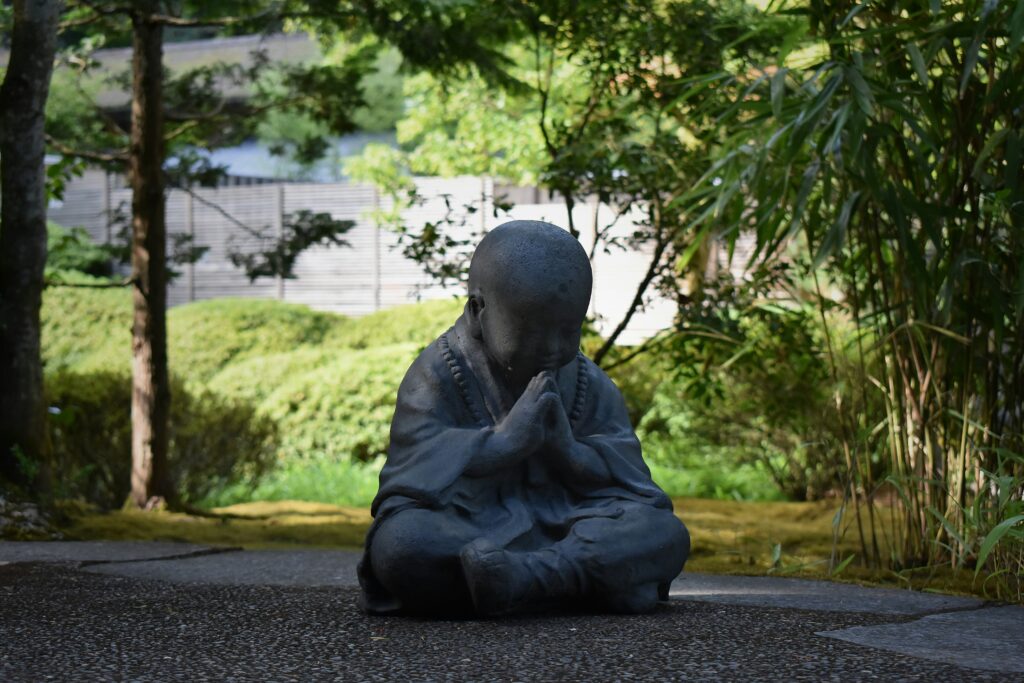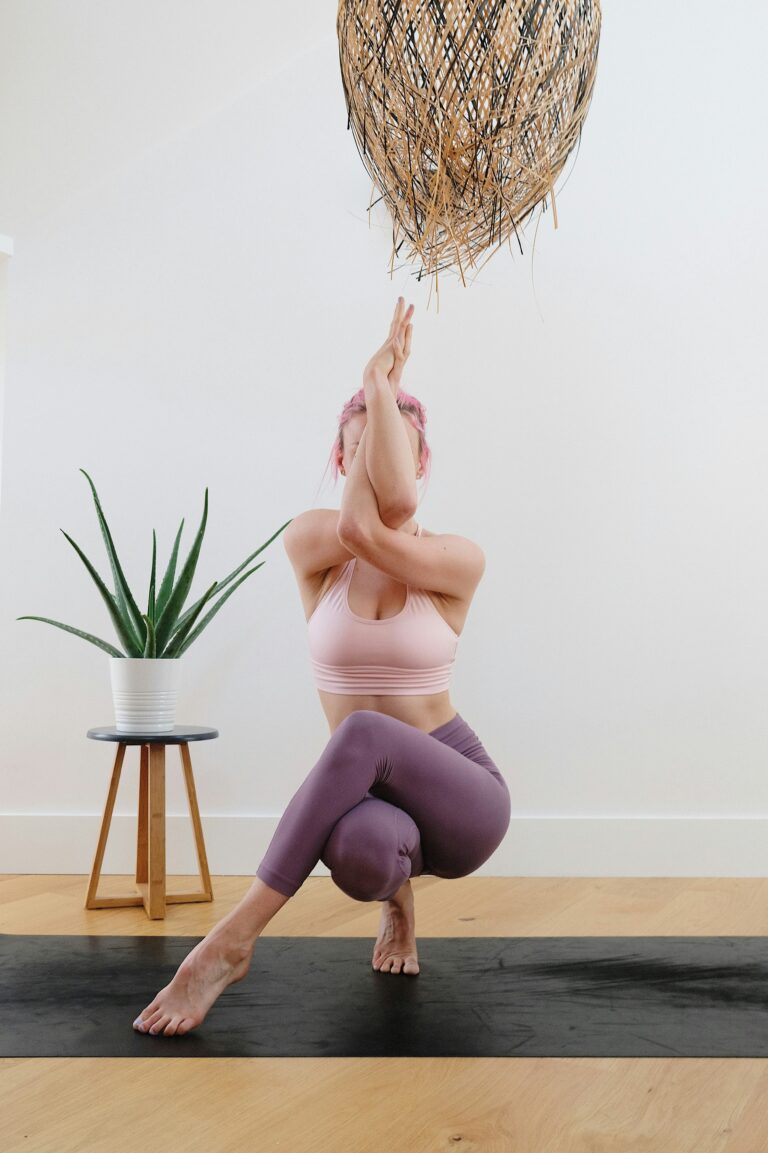Immersing oneself in a world of tranquility and peace is more than a mere desire in today’s fast-paced life. The constant pressures of daily routines, stress-inducing deadlines, and tumultuous relationships demand a balance that restores inner calm. “Find Your Zen: Unwind with Guided Imagery for Stress Reduction” is a comprehensive guide designed to help achieve this harmony through the powerful tool of guided imagery.

Guided imagery, a widely recognized stress management technique, employs the power of imagination to induce relaxation, lower stress levels, and foster overall well-being. This technique taps into the connection between the mind and body, creating an avenue for the power of positive thinking to enhance physical health. Our detailed guide will delve deep into this technique, offering a step-by-step process of using guided imagery for stress reduction.
Prepare to embark on a journey of self-discovery and healing, as this guide is filled with practical tips, expert advice, and real-life testimonies. By the end of this guide, the understanding and application of guided imagery will be clear, enabling a life filled with more peace, better health, and less stress. A journey to find your Zen begins here, where the mind learns to control the waves of life, rather than being swept away by them. So, let’s get started on this transformative journey, right away.
Understanding Guided Imagery
The concept of guided imagery is often misunderstood or overlooked, yet it is a powerful tool for stress reduction. In the realm of psychology, guided imagery refers to a wide array of techniques that help individuals focus their imagination in a conscious direction to help alleviate stress and anxiety.
It’s a form of focused relaxation that provides a powerful psychological strategy to enhance health, reduce stress and alter behaviour. The premise of guided imagery lies in the direct connection between the visual brain and the autonomic nervous system. This connection allows the body to respond as if what’s being imagined is real.
How Does Guided Imagery Work?
The process of guided imagery involves using the power of the mind to stimulate calmness and peace. This is done through the use of relaxing and peaceful images that help distract the mind from stressors. The technique of guided imagery involves the use of various senses such as sight, sound, taste and smell, hence making the experience rich and engaging.
There are three main components to the process of guided imagery: relaxation, visualization, and the positive outcome. The individual is first guided to a state of relaxation. Once the person is relaxed, the process of visualization starts. This involves imagining a peaceful and calming scene or situation. Finally, the person is asked to imagine the positive outcome that they want to achieve.
Guided Imagery for Stress Reduction
In moments when you are facing elevated or overwhelming levels of stress, your body may instinctively shift into what is commonly referred to as the “fight or flight” mode. This physiological state is an automatic survival mechanism designed by evolution to help you respond quickly and effectively to immediate threats or dangers. It prepares the body for rapid action by increasing heart rate, tightening muscles, and sharpening mental focus. While this response is highly useful in short bursts during truly threatening situations, the problem arises when it is triggered frequently or remains active for prolonged periods. Chronic activation of this stress response can lead to a range of harmful effects on both physical and mental health, including anxiety, digestive issues, insomnia, weakened immunity, and even cardiovascular problems.
One highly effective and accessible strategy for mitigating these effects is guided imagery, a mental technique that uses vivid, descriptive language and directed visualization to engage the imagination in a therapeutic way. Guided imagery can be a remarkably powerful tool for reducing stress and inducing a state of deep relaxation and emotional calm. It works by shifting your focus away from the source of your stress and guiding your thoughts toward soothing, peaceful, and restorative mental landscapes.
How Does Guided Imagery Help Reduce Stress?
Guided imagery operates through the use of intentional, purposeful mental exercises that involve a combination of focused attention, visual imagination, and positive suggestion. These mental exercises are usually led by a therapist, a trained facilitator, or an audio recording with a calming voice and descriptive script. The practice encourages you to visualize serene settings such as a quiet beach, a tranquil forest, or a warm, sunlit meadow—places that evoke feelings of comfort, safety, and serenity. By immersing your mind in these positive images, your body begins to respond accordingly, initiating the parasympathetic nervous system and reducing the activation of the stress response.
Physiologically, guided imagery can significantly reduce stress by slowing the heart rate, lowering blood pressure, and decreasing the rate of respiration. These changes can have an immediate and noticeable effect on how relaxed and grounded you feel. Muscular tension tends to ease, and your thoughts often become more clear and less chaotic. Mentally, this process allows the brain to disengage from negative thought patterns and shift toward a more peaceful, balanced state of awareness.
Furthermore, guided imagery can enhance your sense of control over stressful situations. Often, stress feels overwhelming because it is associated with a perceived lack of control or predictability. By consciously directing your mind to a calming and safe scenario—one in which you feel empowered, peaceful, and at ease—you can begin to reclaim a sense of agency and stability. This psychological shift can be incredibly empowering, reinforcing your ability to manage stress effectively and improving your overall sense of well-being.
Implementing Guided Imagery into Your Routine
Incorporating guided imagery into your daily life is a simple yet highly effective way to manage stress and promote relaxation. Unlike other wellness practices that may require physical exertion or specialized equipment, guided imagery relies solely on your imagination and breath—making it accessible to virtually anyone.
Here are practical steps to get started:
- Create a Quiet Space
Choose a peaceful environment where you can sit or lie down without distractions. Dim the lights, silence your phone, and make yourself comfortable. - Center Yourself
Close your eyes and take several deep, slow breaths. Allow your body to relax with each exhalation, letting go of any tension. - Visualize a Peaceful Setting
Imagine yourself in a calming place—perhaps a tranquil forest, serene mountain top, cozy cabin, or sunlit beach. Let the image unfold in your mind. - Engage All Senses
What do you see around you? Can you hear birds, waves, or wind? Feel the texture of the ground beneath you. Smell the fresh air or salty breeze. The more vivid the scene, the more immersive and effective the practice. - Remain in the Scene
Stay in this calming space for 5 to 15 minutes, letting feelings of peace and security wash over you. If intrusive thoughts arise, gently return your focus to the imagery. - Return Gently
When you’re ready, take a few deep breaths and gradually bring your awareness back to your surroundings. Open your eyes slowly, feeling refreshed and centered.
Practicing this technique regularly—whether daily or during stressful moments—can make a significant difference in your emotional and physical well-being.
The Role of Guided Imagery Scripts
If you’re new to guided imagery or struggle with visualization, guided scripts can be incredibly helpful. These scripts are written descriptions that lead your mind through a relaxing scenario step by step. They serve as mental roadmaps that make it easier to focus and build the imagery experience.
Scripts often incorporate:
- Calming language and sensory details
- Suggestions for emotional release or healing
- Themes of safety, support, or nature
You can read scripts aloud to yourself, record them for playback, or follow along with audio versions available online or through apps. As your comfort with the practice grows, you may find yourself visualizing freely without guidance—creating your own mental sanctuaries on demand.he calming scene and can add structure to your guided imagery sessions.
Beneficial Effects of Guided Imagery
Guided imagery is more than just a tool for relaxation—it’s a powerful mind-body technique that taps into the brain’s ability to influence the body and emotions through visualization. When practiced regularly, guided imagery can support emotional regulation, improve physical well-being, and contribute to a more balanced lifestyle. It engages all the senses to create calming, vivid mental experiences, triggering the body’s natural healing response.
🧠 Mental Health Benefits
One of the most compelling aspects of guided imagery is its positive impact on mental health. By visualizing peaceful and empowering scenarios, individuals can calm their nervous system and promote a shift in mindset.
Some of the key psychological benefits include:
Increased mindfulness and presence, which fosters clarity and emotional awareness
Reduced symptoms of anxiety and depression through activation of the parasympathetic nervous system
Improved sleep quality, particularly for those with insomnia or racing thoughts
Enhanced self-esteem and body image, especially when using affirmations and positive visualization
Strengthened emotional resilience, helping individuals manage daily stressors more effectively
Finding Your Zen
In a world where stress is often an unavoidable part of daily life, guided imagery emerges as a simple yet profoundly effective technique to restore balance and promote emotional and physical well-being. By harnessing the power of the imagination, individuals can create a mental sanctuary where the body and mind are encouraged to relax, heal, and recover from the effects of chronic stress. This practice not only offers immediate relief by calming the nervous system and reducing physiological symptoms—such as elevated heart rate and tense muscles—but also provides a long-term strategy for developing resilience in the face of ongoing stressors.
What makes guided imagery especially powerful is its accessibility. It does not require any special equipment, medications, or environments, making it a flexible tool that can be practiced almost anywhere—at home, at work, or during moments of anxiety in public spaces. Whether guided by a professional therapist, an app, or a simple audio recording, the consistent use of mental imagery to visualize peaceful, safe, and comforting environments can significantly alter one’s mental state and emotional outlook.
Beyond its physiological benefits, guided imagery empowers individuals to regain a sense of control over their emotional responses. It shifts the focus from external chaos to internal calm, helping people cultivate mindfulness, inner peace, and self-awareness. This intentional redirection of thought not only soothes the immediate symptoms of stress but can also enhance emotional intelligence and personal growth over time.
Ultimately, guided imagery is more than just a relaxation technique—it is a practice of self-care, self-soothing, and psychological empowerment. When integrated into a regular routine, it can become a powerful ally in managing the demands of modern life and nurturing a deeper connection between the body, mind, and spirit.
Physical Health Benefits

On a physical level, guided imagery has been shown to help manage pain, improve cardiovascular health, improve recovery from surgery or other medical procedures, strengthen the immune system, and enhance overall physical well-being.
In a world where stress is often an unavoidable part of daily life, guided imagery emerges as a simple yet profoundly effective technique to restore balance and promote emotional and physical well-being. By harnessing the power of the imagination, individuals can create a mental sanctuary where the body and mind are encouraged to relax, heal, and recover from the effects of chronic stress. This practice not only offers immediate relief by calming the nervous system and reducing physiological symptoms—such as elevated heart rate and tense muscles—but also provides a long-term strategy for developing resilience in the face of ongoing stressors.
What makes guided imagery especially powerful is its accessibility. It does not require any special equipment, medications, or environments, making it a flexible tool that can be practiced almost anywhere—at home, at work, or during moments of anxiety in public spaces. Whether guided by a professional therapist, an app, or a simple audio recording, the consistent use of mental imagery to visualize peaceful, safe, and comforting environments can significantly alter one’s mental state and emotional outlook.
Beyond its physiological benefits, guided imagery empowers individuals to regain a sense of control over their emotional responses. It shifts the focus from external chaos to internal calm, helping people cultivate mindfulness, inner peace, and self-awareness. This intentional redirection of thought not only soothes the immediate symptoms of stress but can also enhance emotional intelligence and personal growth over time.
Ultimately, guided imagery is more than just a relaxation technique—it is a practice of self-care, self-soothing, and psychological empowerment. When integrated into a regular routine, it can become a powerful ally in managing the demands of modern life and nurturing a deeper connection between the body, mind, and spirit.
Conclusion
Guided imagery is a versatile tool that can help you find your zen in times of stress. By visualizing peaceful and calming scenes, you can help your mind and body relax and reduce the harmful effects of stress on your health.
Whether you’re a busy professional, a stressed-out student, or someone simply seeking a better way to manage life’s daily pressures, guided imagery can be a beneficial addition to your stress management toolkit. So why not give it a try? You might just find the peace and relaxation you’ve been searching for.
In conclusion, the “Find Your Zen: Unwind with Guided Imagery for Stress Reduction” offers a valuable tool for managing stress and achieving a state of calm. This approach, which employs the power of imagination and focused relaxation, is not only effective but also easy to integrate into daily routines. Moreover, the technique’s flexibility allows users to adapt the imagery to suit their individual needs, making it a highly personalized stress reduction strategy.
Furthermore, by helping users to connect with their inner peace and tranquility, guided imagery promotes a more mindful and balanced lifestyle. The benefits extend beyond mere stress reduction, encompassing improved sleep, better mood, enhanced focus, and overall well-being. Thus, guided imagery for stress reduction is not just about finding your zen; it’s about embracing a holistic approach to mental health.
So, if you’re feeling overwhelmed by the hustle and bustle of daily life, remember that relaxation is just a thought away. Embrace the power of your imagination, and let it guide you towards a more peaceful and centered existence. After all, in the pursuit of well-being, sometimes the most profound journeys begin within.



